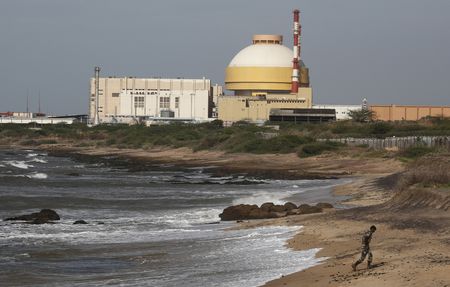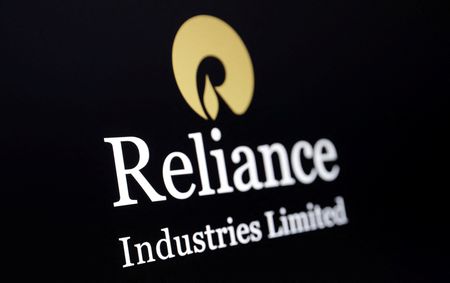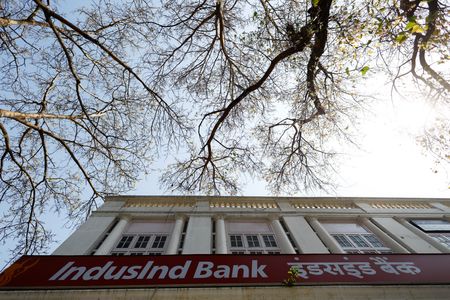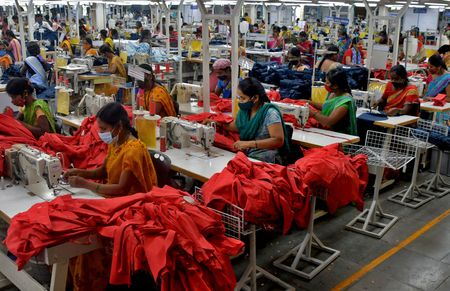By Sudarshan Varadhan and Sarita Chaganti Singh
This was originally published in the India File newsletter, which is issued every Tuesday. Sign up here to get latest news from India and how it matters to the world.
India has talked for decades about making nuclear power a centrepiece of its energy strategy but has made little real progress. This year’s federal budget tackled some of the thorniest issues standing in nuclear’s way. Is nuclear power finally getting its moment in the world’s most populous nation? That’s our focus this week.
Modi’s party wins local elections that put it in charge of India’s national capital region for the first time in 27 years. Scroll down for more on that.
This week in asia
** Trump raises tariffs on aluminum, steel imports in latest trade war salvo
** In China’s export hub of Yiwu, traders shrug off Trump’s tariffs
**North Korean leader Kim Jong Un vows to further develop nuclear forces
**New Zealand to loosen visa rules to lure foreign investors
Nuclear power prospects
India breathed new life into its decades-old nuclear power ambitions this month when its annual budget proposed amending stringent liability laws to allow private investment in the sector – including from foreign companies.
Prime Minister Narendra Modi is expected to discuss nuclear investments by U.S. companies in his meeting with President Donald Trump this week, two government sources said, as part of a likely packed agenda covering tariffs, arms sales and Indian deportees from the U.S.
As the world’s fastest-growing major economy and third-largest greenhouse gas emitter, India has said it wants to meet its power needs and carbon reduction targets in part by expanding nuclear power capacity to 100 gigawatts (GW) over the next two decades, more than 12 times the current 8.2 GW.
But India’s drive for nuclear power, repeatedly thwarted over the years by legal hurdles and a lack of investment, still faces some politically fraught legislative wrangling, as well as the potential for public protests, which have erupted in the past.
“This goal will require significant legislative reforms, particularly to enable private-sector participation through amendments to the Atomic Energy Act and the Civil Liability for Nuclear Damage Act,” energy think-tank Ember said in a note.
The nuclear push coincides with a global realignment of carbon reduction strategies. The number of nuclear projects under construction globally is nearing its highest in 30 years with more than 40 countries including Indonesia and the Philippines planning to start or expand nuclear power generation.
India alone plans to bring onstream an additional 14.3 GW of conventional nuclear capacity by 2032, and by 2033 wants to build five indigenously developed small modular reactors – which could fill niche power requirements although their contribution to total power generation would be modest.
Like India’s burgeoning space sector, which hit some major milestones over the past year, the nuclear power industry is now being opened up to private-sector capital both at home and from abroad.
Path to partnerships
India paved the way for a nuclear energy partnership with the United States in a landmark deal 20 years ago, and the two agreed in 2019 to build six U.S. nuclear power plants in India.
Those facilities never got built, in part due to issues surrounding India’s liability law, but the U.S. government has recently begun removing roadblocks to forge deeper energy ties with New Delhi.
On the domestic front, Indian utility majors including Tata Power, Vedanta, Reliance Industries have already held preliminary talks.
There’s a lot of ground for nuclear power to make up, however, and it may remain below its targets into the next decade.
India needs to more than double its non-fossil fuel capacity to achieve its aim of 500 gigawatts of clean electricity capacity by 2030, from the current 217.6 GW.
The drive into renewables such as solar and wind power is losing steam, however, due in large part to reliability concerns and a lack of battery storage. This puts even more impetus on nuclear.
Solar output last year grew at its slowest pace since India made international commitments to fight climate change in 2015, while annual wind power output fell for the first time since 2020.
What do you think of the outlook for nuclear power in India? What are the key challenges to making it a central part of India’s energy supply? Write with your views to sudarshan.varadhan@thomsonreuters.com.
In quotes
“It is our guarantee that we will leave no stone unturned in developing Delhi, improving the overall quality of life for the people.”
Indian Prime Minister Narendra Modi took to social media platform X after local election results showed his party regained power in the nation’s capital for the first time in 27 years.
Modi’s Bharatiya Janata Party and its key opponent, the Aam Aadmi Party, had both promised large cash giveaways in the election campaign.
The BJP proposed monthly payments of 2,500 Indian rupees ($28) to underprivileged women in the Delhi area and a one-time payment of 21,000 rupees to every pregnant woman, among other giveaways.
Market matters
India’s central bank cut rates last week for the first time in nearly five years but signalled it would take a data-driven stance on any future moves.
Global uncertainty prevented the Reserve Bank of India from changing its stance to “accommodative” from “neutral”, Governor Sanjay Malhotra said in his policy review last week.
Malhotra said the central bank would remain “agile” in providing adequate liquidity to the banking sector and was not targeting a specific rate for the rupee.
(By Sudarshan Varadhan and Sarita Chaganti Singh; Additional reporting by Ira Dugal; Editing by Edmund Klamann)










